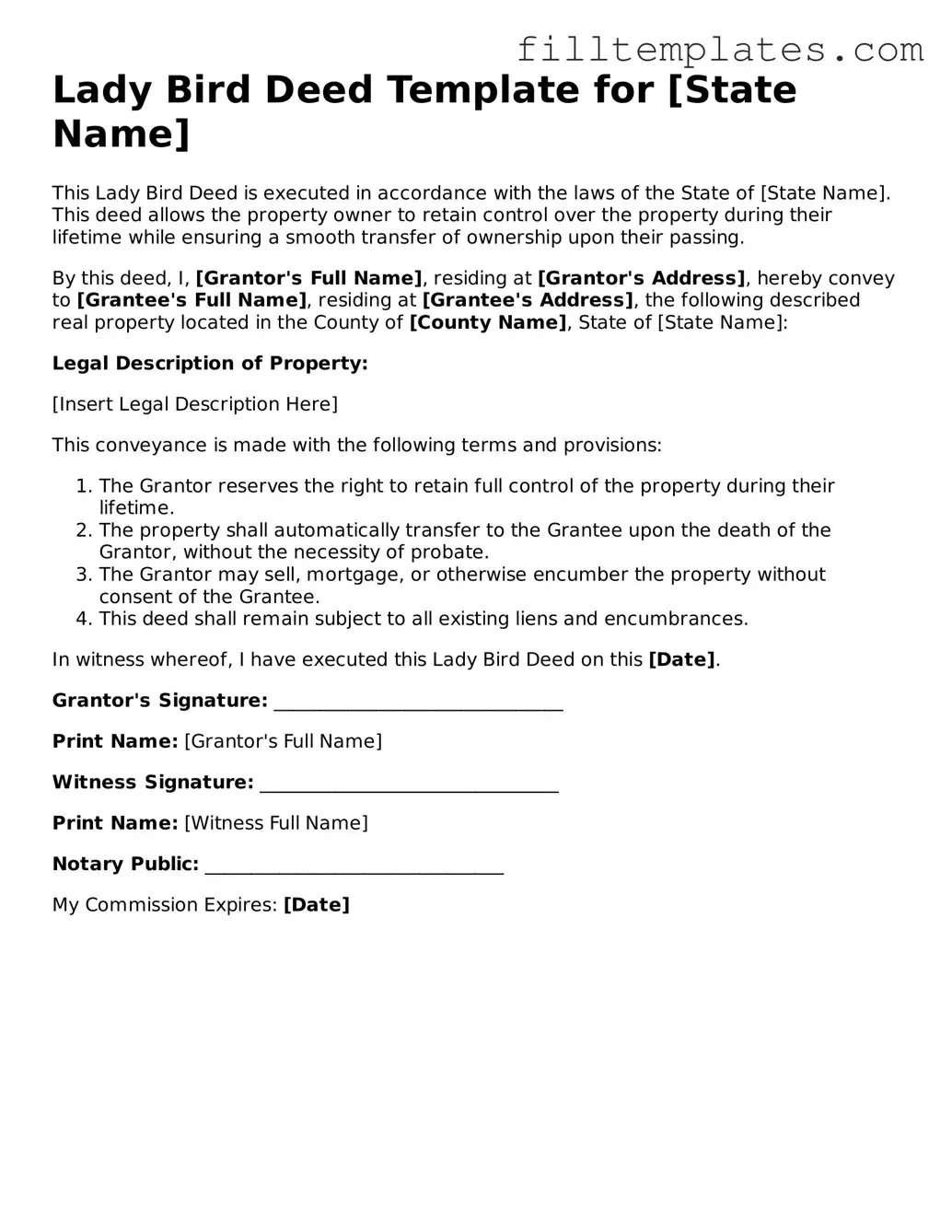Lady Bird Deed Template for [State Name]
This Lady Bird Deed is executed in accordance with the laws of the State of [State Name]. This deed allows the property owner to retain control over the property during their lifetime while ensuring a smooth transfer of ownership upon their passing.
By this deed, I, [Grantor's Full Name], residing at [Grantor's Address], hereby convey to [Grantee's Full Name], residing at [Grantee's Address], the following described real property located in the County of [County Name], State of [State Name]:
Legal Description of Property:
[Insert Legal Description Here]
This conveyance is made with the following terms and provisions:
- The Grantor reserves the right to retain full control of the property during their lifetime.
- The property shall automatically transfer to the Grantee upon the death of the Grantor, without the necessity of probate.
- The Grantor may sell, mortgage, or otherwise encumber the property without consent of the Grantee.
- This deed shall remain subject to all existing liens and encumbrances.
In witness whereof, I have executed this Lady Bird Deed on this [Date].
Grantor's Signature: _______________________________
Print Name: [Grantor's Full Name]
Witness Signature: ________________________________
Print Name: [Witness Full Name]
Notary Public: ________________________________
My Commission Expires: [Date]
